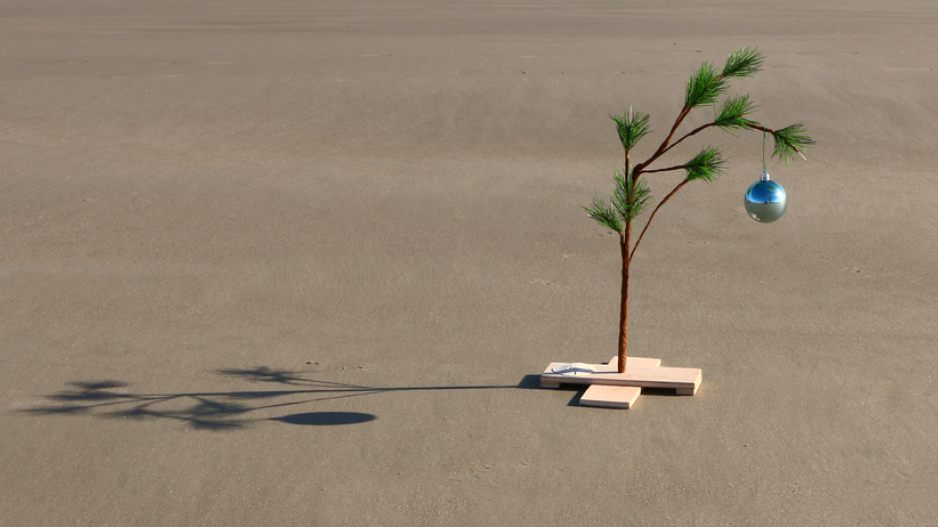The situation is not quite “woe Christmas tree,” but the legacy of 2015’s long, hot and dry summer is being felt at Metro Vancouver lots, where selection is less than last year.
“The drought had an impact on some of the Noble and Fraser firs, and basically a lot of the high-end stuff,” said Jesse Johl, president of the Vancouver South Lions Club and co-chairman of the Lions’ Christmas tree lot at 41st and Fraser. “It was really affected by the drought. We ended up having not very many, not a lot of the high-end trees.”
The volunteer-run lot, a tradition for more than six decades, sells about 2,000 Mission-grown trees and raises $50,000 a year for charity, Johl said. While the $80 to $90 range trees were scarce, it was far from a crisis for the industry. He said the lot was “inundated” with customers for the first 10 days after it opened on November 28.
“That being said the quality of the trees actually wasn’t that bad this year,” Johl said. “The ones that were able to get water did well. The Plantation firs, they did relatively well because they’re lower alpine trees, but the higher alpine trees didn’t fare so well.”
The owner of Chilliwack’s Pine Meadows Tree Farm and treasurer of the BC Christmas Tree Council said trees generally grow in the spring and develop roots in summer and fall. Arthur Loewen said the latter phase is when the most damage would have been done.
“One thing I noticed on our farm, and I heard from a few others, that the growth was less than normal, because they flesh out in May and June and July, and they didn’t flesh out as much,” Loewen said. “The growth was there, but the amount of growth was less.”
There are other dynamics affecting the industry, Loewen said. B.C. relies on about 200,000 imports a year from Oregon and Washington and the drop in the value of the Canadian dollar compared with the greenback pushed the price of imports up. There are also growing cycles. In B.C., it has become far less lucrative to grow trees because of increasing land values.
“In B.C., especially Fraser Valley, the land is too expensive to grow Christmas trees on. If you buy land at $75,000 to $100,000 an acre to plant Christmas trees, you’d be losing money.”
Loewen said the Canadian industry counted $64.4 million in farm cash receipts in 2014, up 16% from 2013. Some $32.6 million worth of trees was exported. The value of artificial trees was $58.3 million.
“Cash value. We are getting more income from trees grown naturally on our farms than from artificial trees. But keep in mind artificial trees you only have to buy one every five years.”
According to Statistics Canada, B.C. had 506 farms that produced 2,621 hectares of trees in 2011, down from 3,565 hectares a year earlier. B.C. represented $2.45 million – or 5% of the national market share of $55.2 million – in 2013.
The British Columbia government offers free use permits to cut-your-own Christmas tree from Crown land. Applications are accepted online or at FrontCounter BC offices.
@bobmackin




